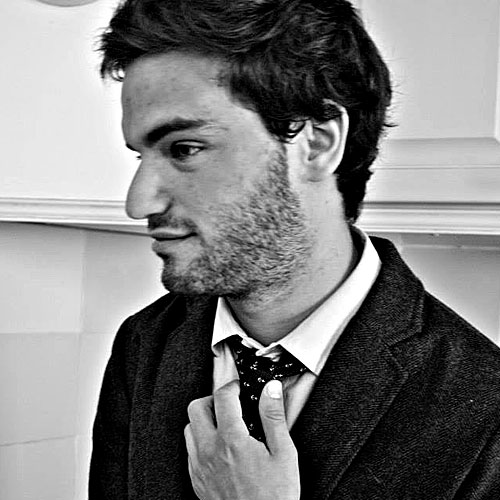Everyone’s seen Groundhog Day, the 1993 Harold Ramis classic wherein a churlish weatherman, played by Bill Murray, is forced to live the same Groundhog Day over and over again until he learns the errors of his selfish ways and succeeds in wooing Andie MacDowell. Hell, I’ve seen Groundhog Day so many times at this point that it feels like Groundhog Day every subsequent time I see it. (Consequently, I’ve made this same joke so many times that it feels like Groundhog Day every subsequent time I utter/write it.)
People love Groundhog Day, I’m convinced, for the same reason people love Stripes: Bill Murray’s in it, and people like hanging out with Bill Murray. Both are only good movies, however, inflated in the culture due to our collective Murray-related goodwill into classic movies. (Everything Murray touches is inherently “classic” or bound to be at this point, given his persona.) Groundhog Day, in particular, is never that funny, nor that dramatic, nor that surprising—though it is charming. It ambles on more or less how you would expect it to until it reaches the conclusion you more or less saw coming. Along the way, it’s fun, the way going to a bowling alley is “fun.” You know what you’re going to get. For lack of a better word, Groundhog Day is fine.
Happy Death Day, the Blumhouse horror movie which came out last year and is now available to stream on Amazon, is not fine. It’s better than fine. It’s fucking awesome. And frankly, it’s better at being Groundhog Day than Groundhog Day is at being Groundhog Day.
Happy Death Day is a real elevator pitch of a movie: “Think Groundhog Day, except instead of a weatherman living the same day over and over until he wins the affection of Andie MacDowell, it’s a hot sorority girl who has to live the same day over and over again until she finds the person who keeps killing her.” The “she” here is named Tree, played by Jessica Rothe. Like Murray’s Phil Connors, Tree is bristly and off-putting, decidedly unfriendly and cold—probably because she’s named Tree (kidding). The day she’s destined to live over begins in the morning, in the dorm room bed of Carter (Israel Broussard). Carter is a classic “nice guy who finishes last but actually finishes first” kind of walking trope, the sort of dude we’d consider “hot” if the movie didn’t dictate he wasn’t. Tree is immediately resentful of his presence; she doesn’t remember his name; she has a headache. Storming back to her sorority house, she runs into a guy she went on a date with, but whom she hasn’t called back. When she gets to her room, her seemingly kind-hearted roommate Lori (Ruby Modine) reminds her of how much of a drunken mess she was the night previous, and presents her with a birthday cupcake—which Tree proceeds to throw in the trash. That afternoon, she fat-shames a sorority sister for drinking chocolate milk and makes out with her married professor. Textbook Tree!
In Groundhog Day, Connors’s unlikeable nature fuels the narrative, by giving him room to grow as a person. In Happy Death Day, Tree’s bitchiness fuels the narrative, too, but by giving many people reason to kill her. These include but are not limited to her married professor, her married professor’s wife, the dude she refused to call back and pretty much every girl in her sorority. When she’s first murdered by a masked crusader, at knife-point, while walking to a party, the surliness with which she’s handled every human interaction up until that point serve to establish a sense of suspense, and mystery: really, who the fuck wouldn’t want to kill Tree?
Contrary to Groundhog Day, having to solve her own murder also gives Tree a defined objective—a tangible motive for living this day over and over, again. This is perhaps the strongest case for Happy Death Day. Because no such raison d’être really exists for Phil Connors. Sure, there’s a tacit understanding that being nicer to the townspeople of Punxsutawney, and bedding Andie MacDowell, will put an end to his time loop. But it’s relatively unclear to Conners, at least for most of the movie, that this is the case. Thus he’s destined to kind of meander around, hanging out at the diner, playing piano for kicks, killing it as an ice sculptor, until he stumbles across the threshold of self-growth necessary for him to go on living his life.
Certainly, there is an element of self-growth undergirding Happy Death Day, too—one that is, despite the film’s DNA, more layered than that of Groundhog Day’s. Tree keeps dying on her birthday, which she used to share with her mother, before she died. Living to see the next day ultimately becomes a metaphor for shedding the cumbersome grief surrounding her mother’s death, which has hardened her, and closed her off—particularly from her father.
But Happy Death Day knows what it is, and for all the time the movie spends developing this emotional backbone, it becomes more of a red herring than anything else. Its clever twist—something Groundhog Day, by design, could never really have—reasserts the fact that, while “being a better person” and “learning to live without the ones you love” are great and all, this is a slasher flick, so screw that stuff. Without giving too much away, the ending goes from being very heartfelt to extremely petty—in the best possible way.
Groundhog Day is a good movie, and popularized a novel concept. But just because it’s a classic doesn’t mean it can’t be improved upon. Happy Death Day is aware of the ways it borrows from the premise upon which it was based. Yet it also knows how to do that old concept one better. This Groundhog Day, don’t do what I kind of just assume you always do, and watch Groundhog Day: do yourself a favor and try Happy Death Day instead.






